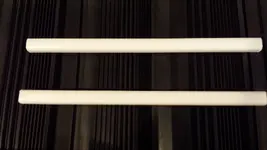Under strictly controlled conditions almost anything will catch gold, even a flat smooth surface. ie: miller table.
When it's boiled down to basics, recovering gold is really all about specific gravity and the best ways of separating particles of differing density from one another using mechanical means combined with natural laws of physics.
The complications arise when speed of recovery combined with higher volumes of material to sort along with varying sizes, shapes, and weights of the material is added to the mix. That's why one size does not fit all. Anytime you can reduce or minimize the variables involved in the job of sorting gold from the non gold mixture you are going to experience greater success.
The most important variable that needs to be addressed to simplify gold recovery is classification. Once the particles being processed are classified to be similar in size no matter what that size is, then it becomes a simple matter to recover the gold from the rest of the particles due to gold's much greater density than anything else it's size.
For 100% gold recovery, it really boils down to classification first, then recovery second.
For example: The Gold Cube is able to process 16 Five gallon buckets full (1000 lbs) of material an hour with virtually no gold loss. Of course the material being run has to be pre classified to 1/8" first. (and the proper flow and angle must also be utilized as in any sluice)
GG~



